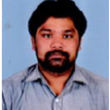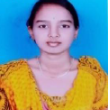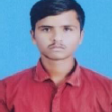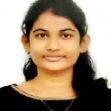International Journal of Image, Graphics and Signal Processing (IJIGSP)
IJIGSP Vol. 15, No. 2, 8 Apr. 2023
Cover page and Table of Contents: PDF (size: 2499KB)
Level Set Segmentation of Images using Block Matching Local SVD Operator based Sparsity and TV Regularization
Full Text (PDF, 2499KB), PP.47-58
Views: 0 Downloads: 0
Author(s)
Index Terms
Block Matching, Basis Updating, Sparsity Regularization, TV Regularization, Level Set Model
Abstract
Image segmentation is one of the most important steps in computer vision and image processing. Image segmentation is dividing the image into meaningful regions based on similarity pixels. We propose a new segmentation algorithm based on de-noising of images, good segmentation results depends on the noisy free images. This means that, we may not get the proper segmentation results in the presence of noise. For this, image pre-processing stage is necessary to denoise the image. An image segmentation result depends on the pre-processing results. In this paper, proposed a new integrating approach based on de-noising and segmentation which is called Level Set Segmentation of Images using Block Matching Local SVD Operator Based Sparsity and TV Regularization (BMLSVD-TV). The proposed method is dividing into two stages, in the first stage images are de-noised based on BMLSVDTV algorithm. De-noising images is a crucial aspect of image processing, there are a few factors to keep in mind during image de-noising such as smoothing the flat areas, safeguarding the edges without blurring, and keeping the textures and new artifacts should not be created. Block Matching, Updating of basis vector, Sparsity regularization, and TV regularization. This method searches for blocks that are comparable to each other in block matching. The data in the array demonstrates a high level of correlation after the matching blocks are grouped together. The sparse coefficients will be gathered after adequate modification. Most of the noise in the image will be minimized through the sparsity regularization step by employing different de-noising algorithms such as Block matching 3D using fixed basis vectors. The edge information will be retained and the piecewise smoothness of the image will be produced using the TV regularization step. Later, in the second state create a contour on the de-noised image and evolve the contour based on level Set function (LSF) defined. This combined approach gives better performance for segmenting the image regions over existing level set methods. When compared our proposed level set method over state of art level set methods. The proposed segmentation method is superior in terms of no.of iterations, CPU time and area covered over the existing level set methods. By this model, we obtained a good quality of restored image from noisy image and the performance of the image quality assessed by the two important parameters such as PSNR and Mean Square Error (MSE). The higher value of PSNR and lower value of MSE leads to good quality of image. In this research work, the proposed denoising method got higher PSNR values over existing methods. Where recovering the original image content is essential for effective performance, image denoising is a key component. It is used in a variety of applications, including image restoration, visual tracking, image registration, image segmentation, and image classification. This model is the best segmentation method for accurate segmentation of objects based on denoising images when compared with the other models in the field.
Cite This Paper
Kama Ramudu, Gajula Laxmi Bhavani, Manabolu Nishanth, Akula Prakash Raj, Vamshika Analdas, "Level Set Segmentation of Images using Block Matching Local SVD Operator based Sparsity and TV Regularization", International Journal of Image, Graphics and Signal Processing(IJIGSP), Vol.15, No.2, pp. 47-58, 2023. DOI:10.5815/ijigsp.2023.02.05
Reference
[1] Rudin, L.I., Osher, S., Fatemi, E.: Nonlinear total variation based noise removal algorithms. Physica D60, 259–268 (1992).
[2] Buades, A., Coll, B., Morel, J.: A review of image denoising algorithms, with a new one. Multiscale Model. Simul.4(2), 490–530 (2005).
[3] Gilboa, G., Osher, S.: Nonlocal linear image regularization and supervised segmentation. Multiscale Model. Simul.6(2), 595–630 (2007).
[4] Osher S. Fronts propagating with curvature-dependent speed: Algorithms based on Hamilton-Jacobi formulations. Journal of Computational Physics. 1988; 79(1):12–49. https://doi.org/10.1016/0021-9991 (88)90002-2.
[5] Liu, J., Zheng, X.: Ablock nonlocal tv method for image restoration. SIAM J. Imaging Sci. 10(2), 920–941(2017).
[6] Dabov, K., Foi, A., Katkovnik, V., Egiazarian, K.: Image denoising by sparse 3-d transform-domain collaborative filtering. IEEE Trans. Image Process. 16(8), 2080–2095 (2007).
[7] Ji, H., Liu, C., Shen, Z., Xu, Y.: Robust video denoising using low rank matrix completion. In: Proceeding IEEE Computer Society Conference Computer Vision and Pattern Recognition, pp. 1791–1798 (2010).
[8] Cai, J.-F., Candès, E.J., Shen, Z.: A singular value thresholding algorithm for matrix completion. SIAMJ. Optim.20(4), 1956–1982 (2010).
[9] Cands,M.B.,Wakin, E.J., Boyd, S.P.: Enhancing sparsity by reweighted l1 minimization. J. Fourier Anal. Appl. 14,877–905 (2008).
[10] Zhang, D., Hu, Y., Ye, J., Li, X., He, X.: Matrix completion by truncated nuclear norm regularization. In: Proceeding IEEE Conference Computer Vision and Pattern Recognition, pp. 2192–2199 (2012)
[11] Gu, S., Xie, Q., Meng, D., Zuo, W., Feng, X., Zhang, L.: Weighted nuclear norm minimization and its applications to low level vision. Int. J. Comput. Vis. 121(2), 183 (2017)
[12] X. Yang, S. Zhan, D. Xie, H. Zhao, and T. Kurihara, “Hierarchical prostate MRI segmentation via level set clustering with shape prior”, Neurocomputing, vol. 257, pp. 154_163, Sep. 2017.
[13] X. Zhang and G. Weng, “Level set evolution driven by optimized area energy term for image segmentation”, Optik, vol. 168, pp. 517_532, Sep. 2018.
[14] F. Gibou, R. Fedkiw, and S. Osher, “A review of level-set methods and some recent applications”, J. Comput. Phys., vol. 353, pp. 82_109, Jan. 2018.
[15] M. Filippone, F. Camastra, F. Masulli, and S. Rovetta, “A survey of kerneland spectral methods for clustering”, Pattern Recognit., vol. 41, no. 1, pp. 176_190, Jan. 2018.
[16] L. Bergé, C. Bou Veyron, and S. Girard, “HDclassif: An R package for model-based clustering and discriminant analysis of high-dimensional data”, J. Statist. Softw., vol. 46, no. 6, pp. 1_29, 2012.
[17] J. A. Cuesta-Albertos, C. Matron, and A. Mayo-Iscar, “Robust estimation in the normal mixture model based on robust clustering. Roy. Statist”. Soc. Ser. B, vol. 70, no. 4, pp. 779_802, 2008.
[18] M. Fatih Talu,ORACM: Online region-based active contour model, Expert Systems with Applications, Volume 40, Issue 16, Pages 6233-6240,ISSN 0957-4174, 2013.
[19] Ramudu Kama, Kalyani Chinegaram, Ranga Babu Tummala, Raghotham Reddy Ganta, “Segmentation of Soft Tissues and Tumors from Biomedical Images using Optimized K-Means Clustering via Level Set formulation”, International Journal of Intelligent Systems and Applications, Vol.11, No.9, pp.18-28, 2019.
[20] Wei Liu, Ran Wang, Jun Su, "An Image Impulsive Noise Denoising Method Based on Salp Swarm Algorithm", International Journal of Education and Management Engineering, Vol.10, No.1, pp.43-51, 2020.
[21] Q. Cai et al., “AVLSM: Adaptive Variational Level Set Model for Image Segmentation in the Presence of Severe Intensity Inhomogeneity and High Noise”, IEEE Transactions on Image Processing, vol. 31, pp. 43-57, 2022.




